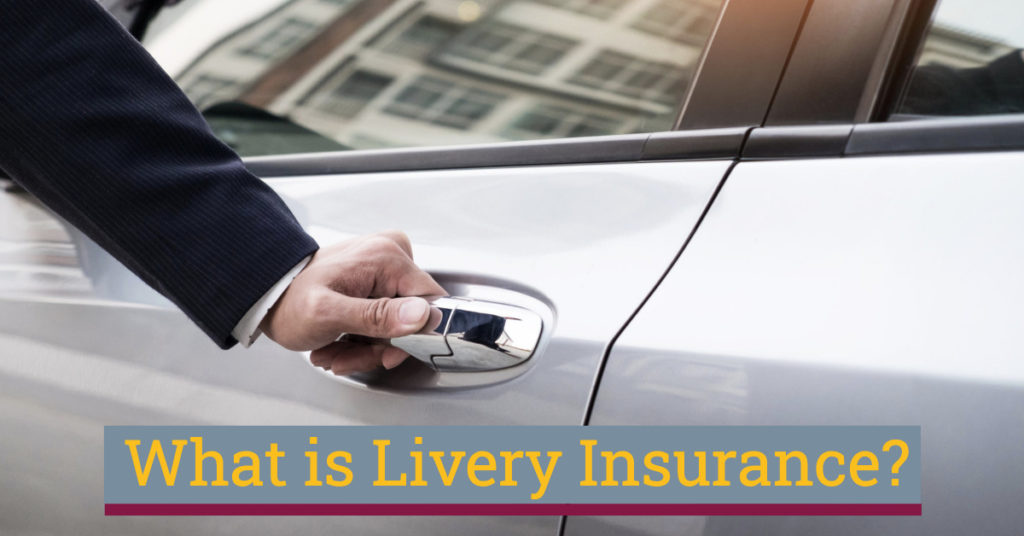
Taxis are still a $23 billion a year industry, despite Uber and Lyft cutting into their space. Meanwhile, limo and town car usage is on an upswing. More and more people using livery services means more demand for drivers. But how many drivers have livery insurance?
If you drive a taxi or limo, there’s a chance you haven’t thought much about livery insurance. Drivers sometimes assume that they are fully covered because their company insures their vehicle for them. Similarly, rideshare drivers often think they’re covered under their regular policy.
But there’s a case for investing in livery insurance and we’re going to break down what you need to know about it.
What is Livery Insurance?
Put simply, livery insurance is a type of commercial auto insurance that covers businesses that transport people on a for-hire basis. Compared to a regular taxi service, which is typically hailed on the spot, a livery service is one where the transportation is scheduled ahead of time, or is on a scheduled route. The distinction between taxi and livery insurance has become more complicated as rideshare platforms blur the differences between the two.
What is a Livery Vehicle?
Taxis, limos, town cars, buses, and rideshare services can all be considered livery vehicles. Businesses that transport people as a courtesy, like hotel shuttles for example, aren’t considered livery vehicles. They’re covered under the business’ commercial policy. Additionally, the term “livery vehicle” does not include vehicles for hire that are driven by the customer.
Livery Insurance Requirements
Livery insurance requirements depend on your specific areas of business and where you live. A trusted insurance company that specializes in taxi and livery insurance can help explain the specific requirements and regulations in your state.
Many people drive for hire without notifying their insurance company, because they don’t want to pay for livery insurance. Some don’t want to go through the process. However, this is risky and unwise; your insurance carrier can drop you if you defraud them in any way, so you need to be upfront about the specifics of your business.
What Does Commercially Insured Mean?
Livery insurance and commercial insurance are not necessarily one and the same. Commercial auto insurance is a more broad term.
Generally speaking, commercial insurance will cover your vehicle if it is used for business purposes. This can range from vehicles used exclusively for business purposes, to delivery vehicles, tow-trucks, for-hire services such as limos, and more.
Commercial insurance is mandatory if you use your vehicle for any type of business purpose that picks up or delivers goods. This includes pizza delivery, messenger services, and companies that have vehicles that pick up supplies.
Commercial Livery Insurance
Commercial livery insurance is a specific type of commercial auto insurance aimed at for-hire services such as limos and taxis, as well as some ride-sharing platforms.
What’s the Difference Between Livery Insurance and Regular Insurance?
The difference between regular insurance and livery insurance is what’s covered in the policy. There are different liabilities and risks when you drive a vehicle for any kind of commercial use.
If you’re using your vehicle to transport goods or people and you’re in an accident, your regular car insurance could deny your claim. If you drive a livery car, special insurance can cover these claims.
Livery insurance also protects you beyond the commercial insurance the company you drive for may have. For example, rideshare services provide their own liability insurance but they may limit what they cover based on certain criteria.
Reasons to Get Livery Insurance
If you drive for-hire, there are benefits to carrying livery insurance like collision coverage and higher liability limits. This may be of particular value to you if you drive a more expensive vehicle. The downside is that livery insurance may not be available from your existing carrier.
Furthermore, livery insurance tends to be comprehensive and can help cover gaps in your auto insurance policy.
How to Find Livery Insurance Companies
Companies that specialize in insurance for taxis and limos will likely be able to provide livery insurance. In contrast, general auto insurance companies may not be as familiar with livery insurance and the specific requirements.
You can find a free livery insurance quote pretty easily online, but it’s a good idea to get quotes from at least three companies for comparison purposes. Make sure the company provides a detailed quote, walks you through the specifics, and answers any questions you may have.

Key Considerations for a Livery Insurance Quote
One important thing to note is that taxis and liveries are regulated on a municipal or city level, so specific requirements and prices vary from place to place. Your first consideration should be whether livery insurance is mandatory for you and what level of coverage you might need. When looking for quotes online, it’s important to do local research and get a quote from a livery insurance agent that is familiar with your location.
Livery Insurance Cost Explained
Generally speaking, livery insurance can cost anywhere from $5,000 to $10,000 per vehicle, per year. However, the cost of livery insurance will depend on many factors including the location of your business (city and state), how the vehicle will be used, your driving record, and the level of coverage you require, among others. A clean driving record will help keep your insurance premium costs low.
Depending on where you live, your driver record, and what coverage you need, livery insurance can be expensive. Ask your agent if your carrier has livery insurance and if they offer discounts.
Get a Livery Insurance Quote Today
The OTTIS team has more than 20 years of experience servicing the insurance needs of the West Coast. We take pride in providing affordable rates and client-based solutions to meet your specific business needs.
We know what you’re looking for in a great transportation insurance company. If you’re looking for commercial insurance or livery insurance, contact us today and find out how we can help you or request a free livery insurance quote to get started.







